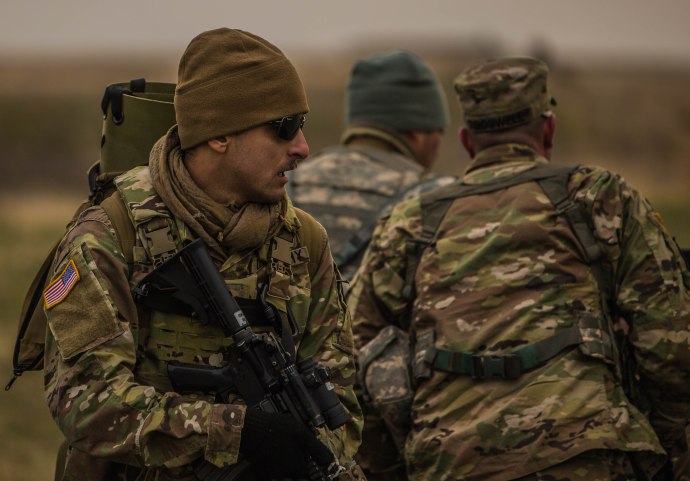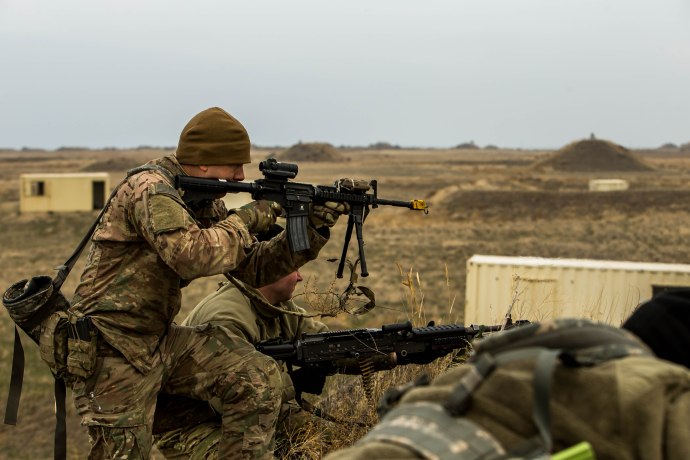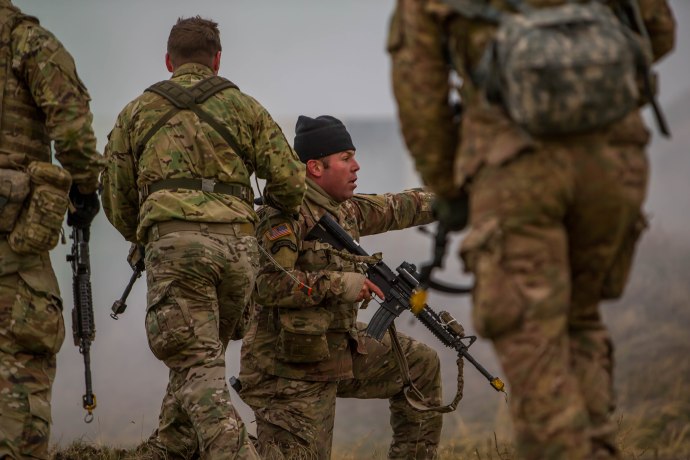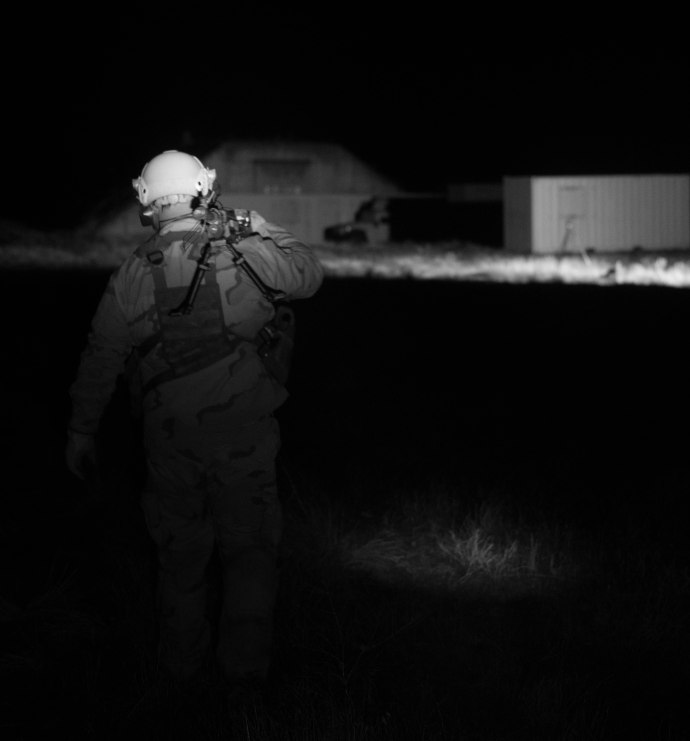 June 21, 1918, Private Thomas Bennett, a Marine rifleman from tiny Dallas, Oregon, filed into the front lines with his brothers of 3rd Battalion, 5th Marines. For almost a month, the American 2nd Division had fought a brutal, close-range battle against the German Army on the north bank of the Marne River. The fresh American troops had blunted a major German offensive, kept the enemy from getting a foothold across the Marne, and played a significant role in saving Paris from coming under attack.
June 21, 1918, Private Thomas Bennett, a Marine rifleman from tiny Dallas, Oregon, filed into the front lines with his brothers of 3rd Battalion, 5th Marines. For almost a month, the American 2nd Division had fought a brutal, close-range battle against the German Army on the north bank of the Marne River. The fresh American troops had blunted a major German offensive, kept the enemy from getting a foothold across the Marne, and played a significant role in saving Paris from coming under attack.
Now, the Americans had gone on the offensive. Inexperienced and using outdated tactics, the 2nd Division suffered catastrophic losses trying to push the Germans back from the Marne.
Thomas and the rest of 3/5 saw the horrific results of this fighting in a former hunting preserve known as Belleau Wood. The once-stunning beauty of this forest had been utterly destroyed by artillery barrages, which turned the woods into a craterscape of blasted tree trunks, shell holes and rotting corpses. Clouds of flies buzzed across the battlefield where the dead of both sides lay in the summer sun, sometimes atop each other in mute testimony to the ferocious hand-to-hand combat that raged over this small stretch of the lines.
Thomas’ battalion relieved the 7th Infantry Regiment, which had gone into Belleau Wood only a week before and had already lost a quarter of its strength. A final regimental assault on the 20th left the outfit in such dire shape that it had to be pulled out of the lines.
On the 23rd, Thomas Bennett and 3/5 were ordered over the top by a chain of command convinced that only a few Germans remained on the northern edge of Belleau Wood. Denied artillery support, 3/5 rose from its firing pits, craters and trenches seven hundred strong in four waves. As the front ranks fell, the men behind them rushed forward to take their place.
They advanced over broken, rocky ground covered with the dead of previous assaults and ran straight into a layered German defensive line complete with machine gun nests that swept the Marines with a deadly crossfire.
In three hours, the battalion lost a hundred and forty men. Pinned by the machine guns, the battalion crawled forward over ground so rocky they could not dig in. As more men fell, the battalion’s surviving officers ordered the the gaps filled. To do it, the men in the succeeding waves had to crawl over their wounded and dying friends.
The attack failed.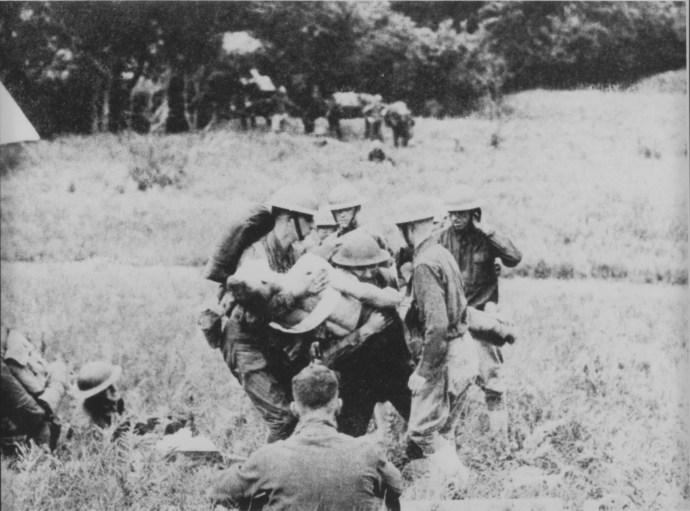
The American command, now aware the Germans were still in Belleau Wood in strength, prepared to pulverize the defenders with one of the most concentrated artillery barrages of the war. Starting at 0300 on June 25, 1918, two regiments of American and French heavy artillery pounded a two hundred meter section of the German lines. Machine gun nests were smothered by high explosive shells. Bunkers and bomb-proof dugouts were buried or blown to pieces. The bombardment continued for fourteen straight hours.
At five in the afternoon, 3rd Battalion, 5th Marines charged forward in a loose skirmish line. They crossed through a surreal battlespace filled with charred and smoking tree trunks, tangles of branches, vines, shell holes–all littered with the fallen. One Marine later wrote, “I almost went mad before I got out of that wood.”
The attack moved forward with a vengeance. Instead of being dispirited by the casualties on the 23rd, the Marines were angry and wanted payback. They pushed forward behind a moving curtain of artillery fire–a tactic known as a rolling barrage–advancing a hundred meters every three minutes. Along the way, they encountered scattered pockets of Germans whose lines had been shattered by the artillery barrage. Some surrendered, but others fought to the death. One Marine got lost and stumbled alone into a German position, where he convinced several English-speaking officers that an entire regiment was advancing on them. The German officers and about eighty-five men surrendered to him on the spot.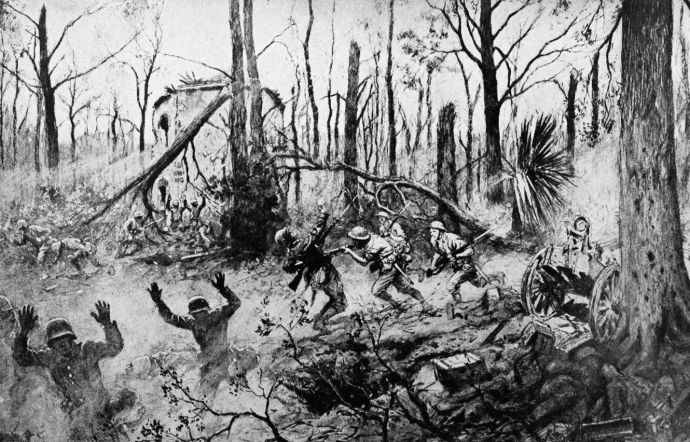
The main part of the battalion reached some high ground, fought their way up a shell-scarred knoll under mortar, grenade and rifle fire. As they reached the top, 3/5’s surviving Marines let out a long war cry and charged down the far slope into the German trenches at the base. Desperate Germans, shell-shocked and dispirited by the bombardment, found themselves locked in hand-to-hand combat with Marines in full fury. They died in place, ran away or surrendered.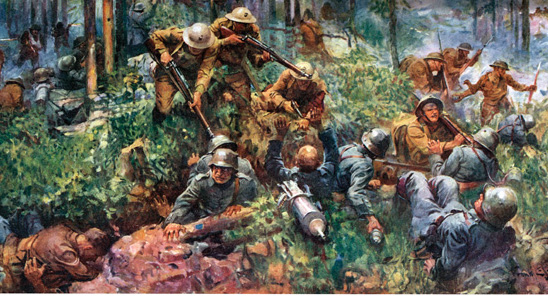
The fighting raged past sunset and well into the night. The following morning, 3/5’s commander, Major Maurice Shearer, reported the Marines now held all of Belleau Wood.
As a result of the battle, the French government awarded both the 5th and 6th Marine Regiments with a Fourragere, a unique cord worn to this day by each member of these two units. Since Belleau Wood, the Fourragere has become a sacred reminder to generations of Marines of their heritage and sacrifice in the defense of France during World War I.
In three days of fighting, 3/5 lost almost half its men killed, wounded or missing. Private Thomas Bennett was among those who went missing during that last attack. His fate remained unknown, and it was not until October that the War Department sent word back to his sister in Oregon that Thomas was MIA.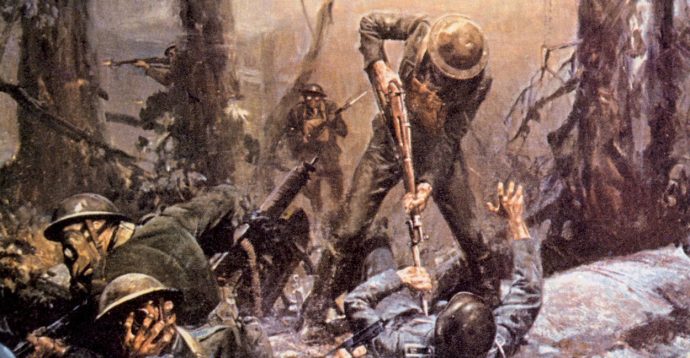
His remains were located in January 1919 and he was declared officially dead. Instead of being laid to rest with his brother Marines in the Aisne-Marne Cemetery, his family brought him home. He was buried in a simple Soldier’s grave in a little cemetery just outside of Dallas in Kings Valley, a fallen local son in a battle memorialized forever as one of the fiercest the Corps ever fought.
World War I hit Oregon particularly hard. At a time when the state had less than a quarter of the population of New York City, thirty-three Oregon Marines were killed, mostly during that month of fighting in the summer of 1918. On the day Thomas was declared missing in action, over fifty other Oregonians were declared killed or seriously wounded.
Thomas’s hometown of Dallas, with a population of about two thousand seven hundred, lost more than a dozen men in France, with at least twice as many wounded in action.
Those deaths devastated this close-knit, patriotic community. Dallas was one of the earliest settled towns in Oregon, and a pioneering spirit pervaded through its generations long after the first post office was established in 1852 and the town officially incorporated in 1874. It was a hard-working, blue collar kind of place where the citizens donated $17,000 in the 1870s so that a rail line could be built through the town. Dallas became the county seat as a result, and a beautiful courthouse became the centerpiece of its tiny downtown.
For a century, Dallas was home to Willamette Industries. Men of Thomas Bennett’s generation worked the company’s sawmill and provided well for their families. After the Great War ended, Dallas became home to one company of Oregon National Guardsmen. A generation later, the sons of the World War I vets would see combat in New Guinea and the Philippines with the 41st Infantry Division. They returned to work in the mills alongside their dads.
That changed in the 1980s when the timber industry declined throughout Oregon. Willamette Industries survived for another twenty years until it was acquired in a hostile take-over in 2002, just as a new generation of Dallas sons graduated high school and entered the post-9/11 world and workforce. Those mill jobs soon disappeared–the new corporation closed the last mill down in 2009.
 Ian Tawney was one of those young men who graduated from Dallas High into that uncertain future in 2003. In a lot of ways, Ian was a typical small town American kid. In school, he was known as a friend to everyone, one of those students who bridged cliques and was widely admired. He was a hunter, an outdoorsman who loved to snowboard in the Cascades during winters and developed a passion for motorcycles. He was also a cat and dog lover, having two of the former and one of the latter.
Ian Tawney was one of those young men who graduated from Dallas High into that uncertain future in 2003. In a lot of ways, Ian was a typical small town American kid. In school, he was known as a friend to everyone, one of those students who bridged cliques and was widely admired. He was a hunter, an outdoorsman who loved to snowboard in the Cascades during winters and developed a passion for motorcycles. He was also a cat and dog lover, having two of the former and one of the latter.
He also had a classic small town love affair. Ashley Stevenson met Ian when they were in pre-school together. They went all through the Dallas school system together as friends. Later, they ended up working at the same retirement home and a romance blossomed. They married in 2005, a few months after Ian joined the Marine Corps.
Ian served with 2nd Battalion, 5th Marines in Iraq, deployed four times overseas. He crossed decks to 3/5 Marines so he could go to Afghanistan with the unit in September, 2010 during the Surge despite the fact that Ashley was pregnant and they’d just bought their first house.
“If you’re part of the varsity team, why sit on the bench?” Ian used to say.
Their parting was unusually difficult. Though Ian had been away from home on four previous deployments, Afghanistan was seething with violence as surging American troops fought their way into Taliban strongholds. This fifth deployment was sure to be a tough one.
In the predawn darkness at Pendleton, the two Oregonians kissed each other goodbye. Ian joined his brothers aboard a bus and started the long journey to Helmand Province.
That fall, the British and the U.S. Marines were locked in battle with the Taliban and their allies throughout Helmand Province. Third Battalion, 5th Marines joined the fight to clear the Taliban from Sangin, a Dallas-sized town that lay beside the Helmand River.
The Marine units in this area faced some of the most skilled insurgents Americans have ever encountered. They created entire minefields with homemade explosives with utterly devious methods of detonation. They had seen American engineers clearing their minefields with metal detectors, so they changed their tactics and created pressure plates from two slabs of Styrofoam with just small metal contacts on either one. When buried in the sand and stepped on, the two contacts would touch, completing a circuit to a bomb emplaced some distance away. To make it even more difficult to detect and disarm, the batteries used to power these bombs were buried deeply in separate locations.
Marines of 3/7 had replaced British commandos around Sangin earlier in the summer. Daily, they’d encountered the enemy in fierce firefights, ambushes and IED attacks. Now, 3/5 stepped in to help break the Taliban hold on Sangin. They came under fire almost immediately. Taliban sniped at them from loopholes in walls, laid bombs in canals and roads even as close to fifty meters from their base.
On October 13, 2010, 3/5 officially took control of the Sangin battlespace. That day, four Marines from Ian’s unit were killed when a roadside bomb destroyed their vehicle. The next day, a dismounted patrol ran into a homemade minefield, and three more Marines perished in blasts. In its first two days of official operations, they’d lost seven men killed in action to these deadly bombs.
 Meanwhile, to the south, at FOB Bastion/Leatherneck, the Marines based there went out on patrols and convoy duty to support the operations around the Helmand River Valley. Leading the way for these Marine columns was a tiny company of Oregon National Guard engineers….from Dallas. The 162 Engineers had spent the year driving Mad-Max-esque armored vehicles around Helmand looking to either detonate or destroy roadside bombs and mines. By October, when they were getting ready to return home, they were down to about eighty engineers. Those who remained were hardened, battle tested veterans. One had his vehicle blown up by IED’s five times. Another stepped on a pressure plate home made mine, but the device malfunctioned and failed to explode.
Meanwhile, to the south, at FOB Bastion/Leatherneck, the Marines based there went out on patrols and convoy duty to support the operations around the Helmand River Valley. Leading the way for these Marine columns was a tiny company of Oregon National Guard engineers….from Dallas. The 162 Engineers had spent the year driving Mad-Max-esque armored vehicles around Helmand looking to either detonate or destroy roadside bombs and mines. By October, when they were getting ready to return home, they were down to about eighty engineers. Those who remained were hardened, battle tested veterans. One had his vehicle blown up by IED’s five times. Another stepped on a pressure plate home made mine, but the device malfunctioned and failed to explode.
Kent “Hat Trick” Hermanson perhaps had one of the toughest experiences in the 162 Engineers. Kent was a North Dakota native who moved to Indepndence, just south of Dallas, after marrying an Oregonian. In one difficult night, Kent’s MRAP (armored vehicle) took three IED strikes. The blasts affected Kent’s hand eye coordination so severely that when given a test, he scored in the bottom seven percentile. It was weeks before he regained his coordination, but Kent kept agitating to go back out on missions. He finally did, and when asked why, he nonchalantly replied, “It is what we’re here to do. Besides the platoon was short men.”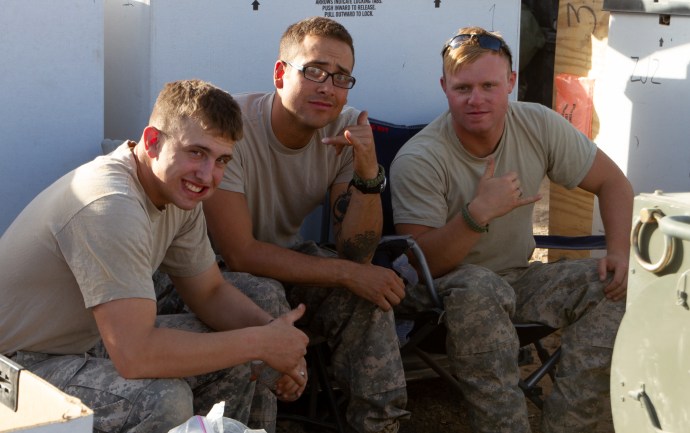
I arrived at FOB Leatherneck to embed with 162 Engineers in time for their final Afghan mission. The day I joined the unit–and ran across some old friends from the Dallas area (I live in Independence), 3/5 Marines lost another man. Lance Corporal James Boelk was killed by another roadside bomb.
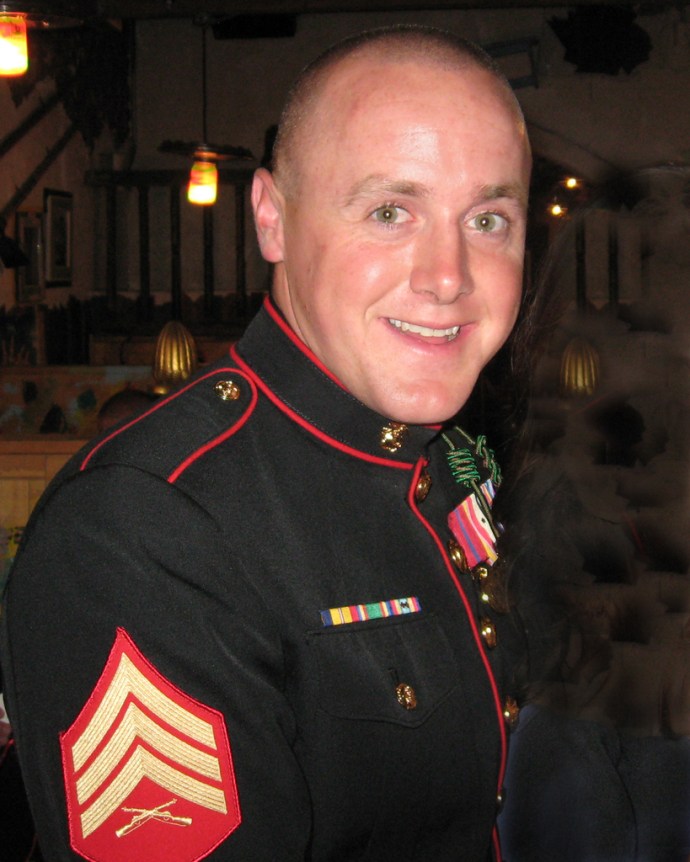 The next day, Ian was leading his squad on a patrol and was killed by yet another IED. For everyone back home who loved Ian, October 16, 2010 became a dividing line in their lives. Once the contact teams with their chaplains knocked on their doors, the family was changed forever by the grief.
The next day, Ian was leading his squad on a patrol and was killed by yet another IED. For everyone back home who loved Ian, October 16, 2010 became a dividing line in their lives. Once the contact teams with their chaplains knocked on their doors, the family was changed forever by the grief.
The great lesson of my own life, after we lost Independence’s Taylor Marks in Iraq in 2009, was to learn that this sort of grief never heals. You never really recover. You just learn to grow around the pain and carry on in their memory. But nothing is ever the same.
A few days later, I went out on that last clearance mission with 162. We rolled through towns and villages in massive, RV-sized armored vehicles. Mine had a metal cage bolted onto the hull as additional anti-rocket protection. Inside the enormous vehicle, I peered out through those metal bars and felt like a prisoner on wheels, watching these Afghans try and carry on with their daily lives.
We crossed the Helmand River, turned north and drove for hours. Eventually, the engineers dismounted and set off on foot with metal detectors, sweeping a stretch of ground near a special operations outpost that the Taliban had nearly surrounded with these homemade mines.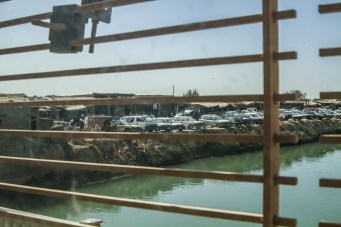
Later that night, as we drove home, a farmer rolled over one of those IED’s with his tractor, killing him instantly. The next morning, one of the 162 officers told me that a Marine unit that had gone up to the same area to sweep for mines. Two men were hit by blasts and lost their legs.
A few days later, while comparing notes with a British journalist who had been embedded with a Royal Engineer unit, I learned that in an area just declared clear, an engineer stepped on a mine and blew up right in front of him. They were in the same section of the valley as we were, just a day or two later.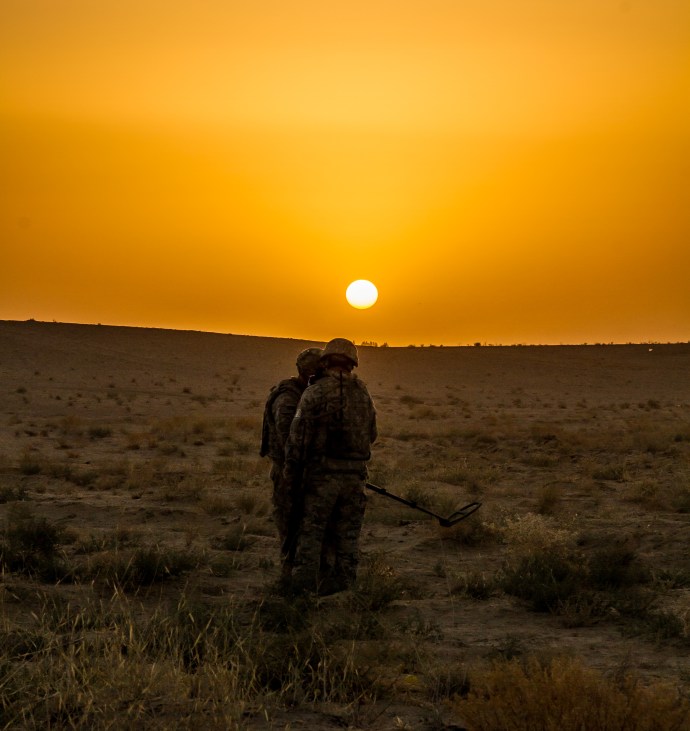
I remained in Afghanistan until November. I missed Ian’s return to Oregon and the ceremony as he was laid to rest in the Dallas Cemetery. His 5th Marine brothers took turns placing their own Fourragere atop Ian’s coffin as a final homage to one of their own.
As the community honored him with a park and a street named for him, I thought a lot about 3/5 and the 162 Engineers and all the blood, treasure and trauma that went into defeating the Taliban around Leatherneck and Sangin that fall. It was a miracle that all our Dallas engineers came home from that deployment, the only route clearance unit not to lose a man during the Surge. 
So many lives lost. In eight days of October, 2010, 3/5 suffered ten Marines killed in action. Fifteen more died before the battalion came home in early 2011. Twenty-five killed, a hundred and eighty-four wounded, thirty four of them amputees. That was the cost to the battalion in what became the bloodiest, most difficult deployment of any Marine unit in the Afghan War.
Fighting around Sangin raged for years. At one point, it looked like the Allies had turned a corner. The Afghan National Army patrolled the streets, the belts of minefields in and around the city were gone, and parts of town returned to an almost-pre-war normal daily life.
Almost. After handing the area over the Afghan government, the Taliban re-emerged and nearly took Sangin in 2015. They were stopped by a mix of ANA, British Commandos and U.S. special operations troops, well supported with aircraft. Ultimately, though, Sangin was captured by the Taliban in March 2017, completing their return to the Helmand River Valley.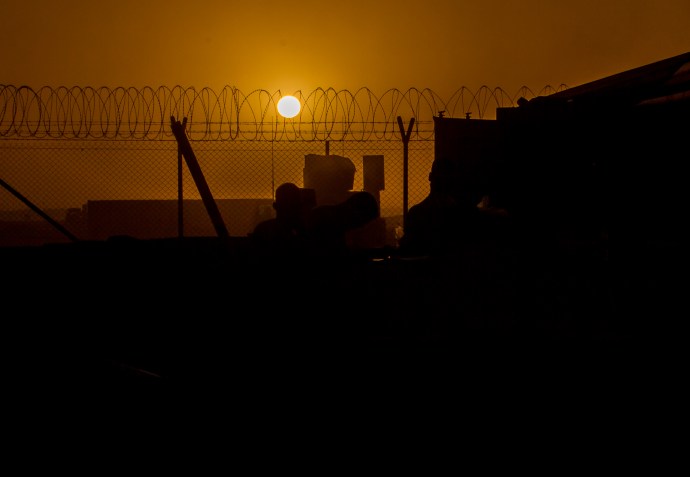
On July 4, 2019, the San Francisco Giants farm team here in Oregon, the Salem-Keizer Volcanoes, honored Sergeant Ian Tawney at a pre-game ceremony that included Ian’s parents, his siblings and friends from all over the country. The moment was part of the team’s long history of honoring veterans and the veteran community, something that Jerry Howard undertakes every year for the Volcanoes. Jerry is part of the front office staff, an Air Force veteran of the 1960s who has been in baseball as a player, umpire, coach or as front office staff for nearly sixty years.
To honor our small town Oregon heroes, Jerry Howard pays the expenses for this 4th of July tradition out of his own pocket. Every year for the last decade, he’s put around three thousand dollars of his own money into ensuring that our men and women we’ve lost overseas can be honored on the baseball diamond during our nation’s birthday. Since I came home from Afghanistan, Jerry is the most noble human being I’ve encountered.
The ceremony was a tear-jerker. I’d met Jerry and talked to Ian’s father ahead of time to get permission to photograph the event and write this article. I wasn’t prepared for the emotional effect it had on me. I stood on the field, shooting photographs of the ceremony with my son, Ed (a budding photojournalist), and watched old friends from the National Guard pay homage to our fallen Marine.
There were so many scars and half-healed wounds on the field that day. The Gold Star mom of Tyrone Woods walked to home plate between ranks of saluting veterans. A twenty-year Navy veteran and SEAL, he was killed in the Bengazi attack of 2012. Chris Sieber and his veteran’s motorcycle group came to honor Ian. Chris had been in Iraq with Taylor Marks and Earl Werner when they were killed in 2009. He carries their names on his left forearm. His way of honoring his lost brothers.
Ian’s family walked from third base to home plate between the ranks of saluting veterans. His parents, John and Theda Tawney, walked hand-in-hand together. As they stood at home plate, they never let go of each other. Not once.
One of his brothers sang a song written for Ian’s daughter. As he waited for the music to be piped over the stadium loud speakers, I heard an elderly man in a seat behind us speaking loudly on his cell phone. “I can’t hear you. I’m at an event…..I can’t hear you!” He kept saying.
I grimaced at the disrespect. If the family heard him, they showed no sign of it.
When the memorial was complete and the ceremony ended, Ian’s family made their way off the field. I watched his parents, side by side, walk away from this special moment and could not help but marvel at their strength. What extraordinary grace from a family so grievously hurt by this war.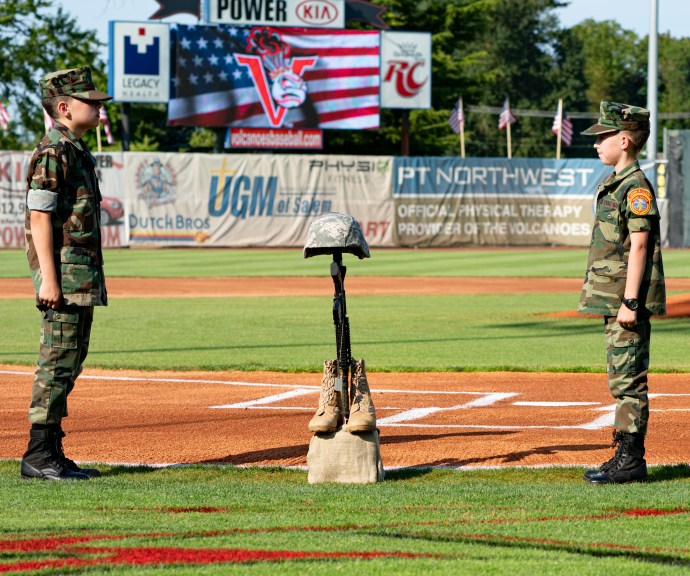
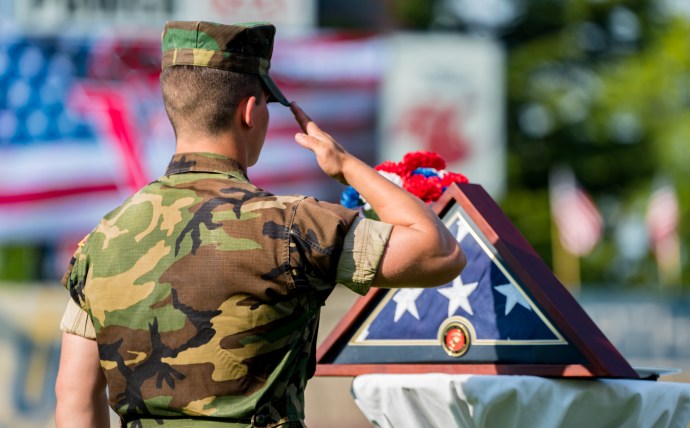




 The Sunday after the ceremony, I returned to the little cemetery in King’s Valley in the car we’d used to escort Taylor up to Willamette National where he was laid to rest. I got out and wandered in search of Ian’s own resting place. As I did, I passed Private Bennett’s headstone. Worn and weathered by a hundred years of Oregon rain, it stands watch like a lonely sentinel over a long-forgotten Marine from a war long out of the public mind. I paused to take a photograph, then realized I was being watched.
The Sunday after the ceremony, I returned to the little cemetery in King’s Valley in the car we’d used to escort Taylor up to Willamette National where he was laid to rest. I got out and wandered in search of Ian’s own resting place. As I did, I passed Private Bennett’s headstone. Worn and weathered by a hundred years of Oregon rain, it stands watch like a lonely sentinel over a long-forgotten Marine from a war long out of the public mind. I paused to take a photograph, then realized I was being watched.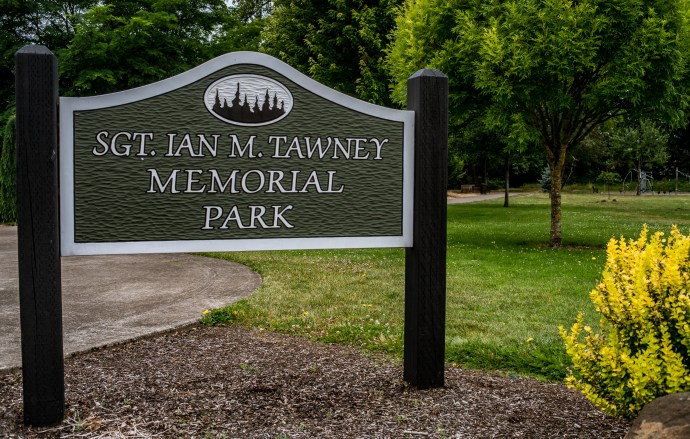
Three deer had made their way into the cemetery and were eyeing me curiously. These beautiful creatures here at a place where so many of our local vets have chosen to be laid to rest–it was a moment for me. One that contrasted deeply with my own memories of Helmand Province. Or the experiences of Private Bennett and the rest of 3/5 in the shattered forest of Belleau Wood.
A minute later, I continued my search for Ian’s grave. I walked up and down the gentle slopes, pausing here and there until at last, I found him, surrounded by tokens of love. Flowers and flags adorned his marker, which stood on a slope overlooking Private Thomas Bennett’s headstone. One 3/5 Marine covering another, a hundred years apart, even in final repose.
I said a prayer for peace, turned and walked back to the GTO.
 Tom Lynch is one of the great unsung and often forgotten aces of the Pacific War. Brilliant, quiet, intense–Lynch was a natural leader who led from the front. During the 39th Fighter Squadron’s first air-to-air engagement in their P-38’s, Lynch actually returned to base after the initial encounter with the bulk of the squadron, jumped into another P-38, and took off to get back into the fight alone.
Tom Lynch is one of the great unsung and often forgotten aces of the Pacific War. Brilliant, quiet, intense–Lynch was a natural leader who led from the front. During the 39th Fighter Squadron’s first air-to-air engagement in their P-38’s, Lynch actually returned to base after the initial encounter with the bulk of the squadron, jumped into another P-38, and took off to get back into the fight alone. That was not the case. On his way out the door for his second tour, he gave a very brief interview (copied here) in mid-November 1943. He got back to the 5th Air Force in early December, returned to the 39th and made several transition flights in the squadron’s new P-47 Thunderbolts.
That was not the case. On his way out the door for his second tour, he gave a very brief interview (copied here) in mid-November 1943. He got back to the 5th Air Force in early December, returned to the 39th and made several transition flights in the squadron’s new P-47 Thunderbolts.![]()

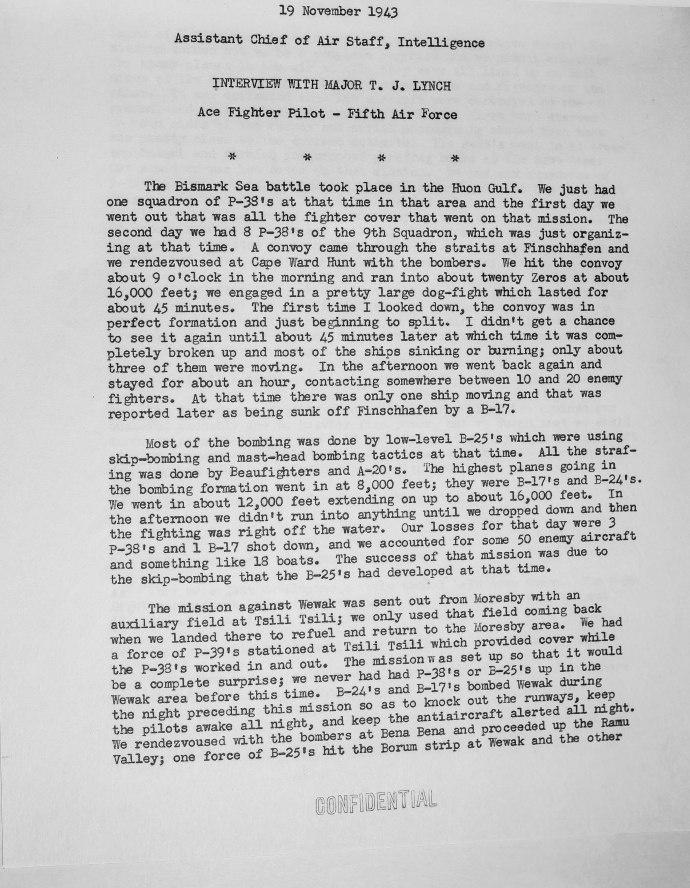

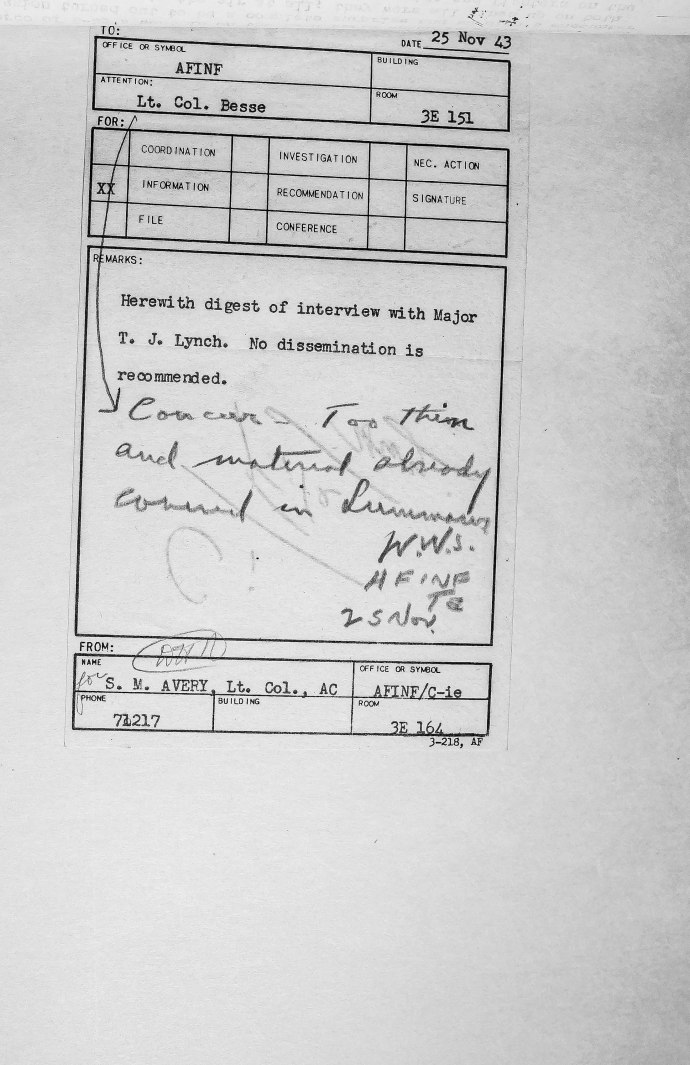

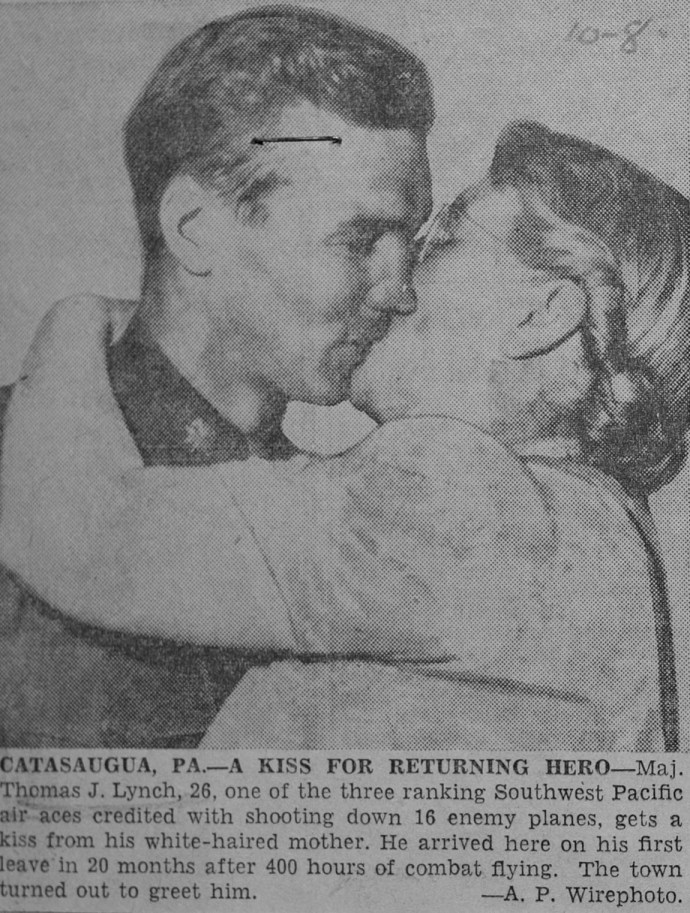


![Race of Aces_James M. Scott quote[1]](https://theamericanwarrior.com/wp-content/uploads/2020/01/race-of-aces_james-m.-scott-quote1-1.png?w=690)





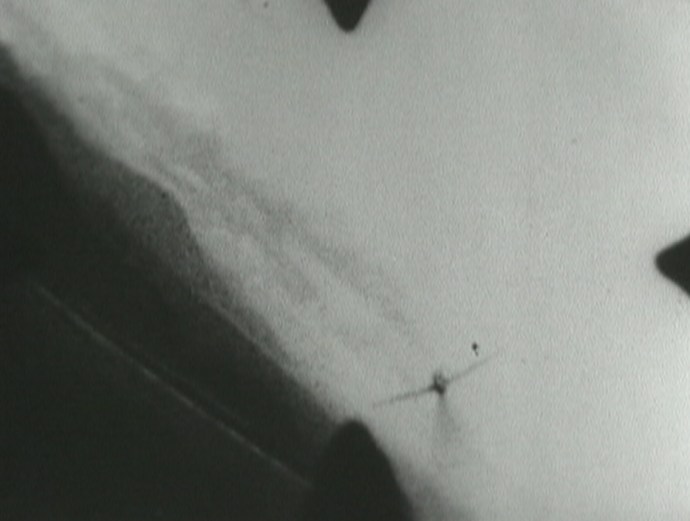

 Kearby’s natural aggressiveness and desire to be the top ace in theater caused him to violate his own tactical doctrine several times. But you can see the thought and discipline such tactics required through his own words.
Kearby’s natural aggressiveness and desire to be the top ace in theater caused him to violate his own tactical doctrine several times. But you can see the thought and discipline such tactics required through his own words.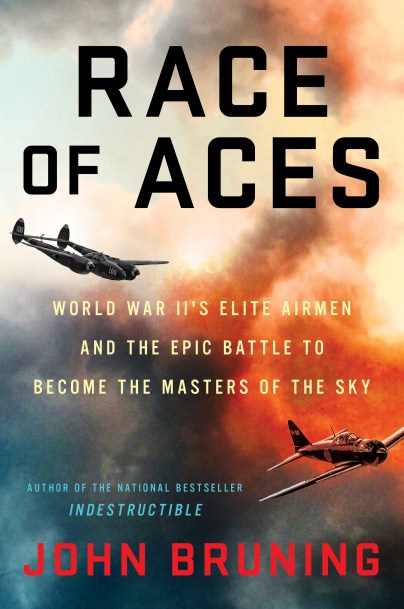
 At U.S. Army Radio Station B3, the night watch stood a vigil over the City by the Bay. Twenty-five hundred feet atop Mount Tamalpais, just north of the Golden Gate, B3 wasn’t really a radio station at all. That was just a name designed to throw off the Japanese fifth column assumed to be hard at work detailing California’s defenses.
At U.S. Army Radio Station B3, the night watch stood a vigil over the City by the Bay. Twenty-five hundred feet atop Mount Tamalpais, just north of the Golden Gate, B3 wasn’t really a radio station at all. That was just a name designed to throw off the Japanese fifth column assumed to be hard at work detailing California’s defenses. Radio Station B3 got on the “hot phone” and called it up the chain of command as Target #25. Word of the contact reached IV Interceptor Command’s operations room at headquarters in Oakland less than ninety seconds later. Female civilian volunteers, holding long poles that resembled pool cues, stood around a massive table map of the San Francisco area on the ops room’s main floor. When a new contact was spotted, their job was to lay down a target stand with an arrow showing its direction. Every thirty seconds the plot would be updated. In a world before computers, human power did the calculating.
Radio Station B3 got on the “hot phone” and called it up the chain of command as Target #25. Word of the contact reached IV Interceptor Command’s operations room at headquarters in Oakland less than ninety seconds later. Female civilian volunteers, holding long poles that resembled pool cues, stood around a massive table map of the San Francisco area on the ops room’s main floor. When a new contact was spotted, their job was to lay down a target stand with an arrow showing its direction. Every thirty seconds the plot would be updated. In a world before computers, human power did the calculating.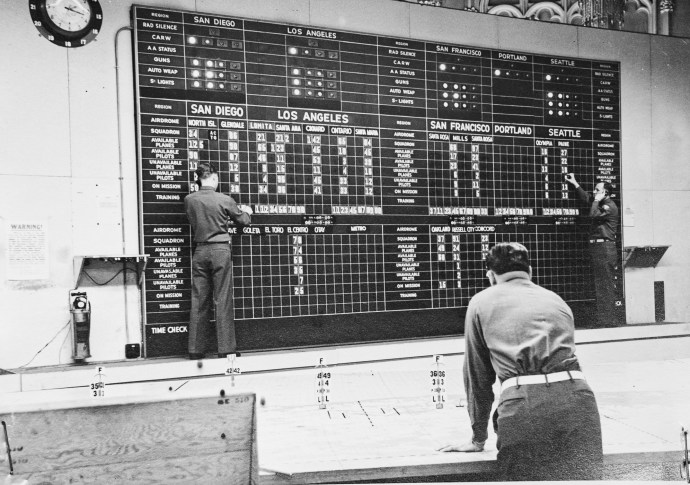



 From Monterey north to Bodega Bay lights went off. Dozens of air raid sirens around San Francisco proper wailed to life as the city went dark. Trolleys trudging up the city’s legendary hills on their last runs of the night were bathed in darkness. The city planned for such moments by painting white “blackout stars” at intervals along the tracks so the blinded drivers could find a stopping point.
From Monterey north to Bodega Bay lights went off. Dozens of air raid sirens around San Francisco proper wailed to life as the city went dark. Trolleys trudging up the city’s legendary hills on their last runs of the night were bathed in darkness. The city planned for such moments by painting white “blackout stars” at intervals along the tracks so the blinded drivers could find a stopping point. The idea that somebody’s son or husband could be summarily dumped overboard off the California coast left a deep impression on the citizens of San Francisco. A few months later, when the Japanese bombed Pearl Harbor, they knew lives would be shattered here at home. The telegrams began arriving the next day, and San Francisco felt the war in its heart, if not in its streets.
The idea that somebody’s son or husband could be summarily dumped overboard off the California coast left a deep impression on the citizens of San Francisco. A few months later, when the Japanese bombed Pearl Harbor, they knew lives would be shattered here at home. The telegrams began arriving the next day, and San Francisco felt the war in its heart, if not in its streets. One bartender reported a young lieutenant who repeated a story that the Japanese fifth column had actually operated a short wave radio from the basement of the Marine Corps barracks at Ewa Field on Hawaii just after Pearl Harbor. Later in December, a search team found the transmitter and several Japanese clustered around it and shot them dead.
One bartender reported a young lieutenant who repeated a story that the Japanese fifth column had actually operated a short wave radio from the basement of the Marine Corps barracks at Ewa Field on Hawaii just after Pearl Harbor. Later in December, a search team found the transmitter and several Japanese clustered around it and shot them dead.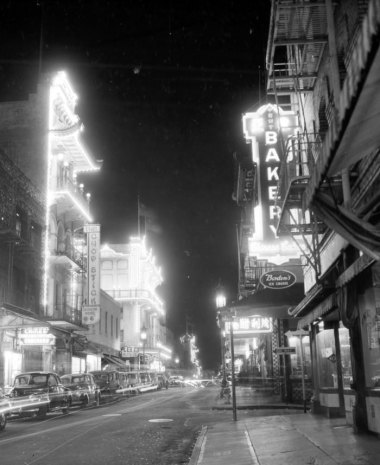
 Then their flyers began to do die. Aircraft crashes were rarities in pre-war life that garned headlines in the local papers. As the Army Air Force and Navy flung farm kids into cockpits and tried to teach them how to survive at the controls of advanced aircraft full of untested technology, crashes took place every day in California. Residents around Hamilton Field heard the whine of overrevved engines like mechanical death wails. They felt the explosions like earthquakes rocking the ground. They learned to live with sights of crash boats fishing the bodies out of the bay, or search crews picking remains out of hillsides strewn with wreckage when pilots slammed into the coastal mountains in bad weather. The crashes grew so frequent that by May, the newspapers barely gave a fatal one more than an inch or two of ink.
Then their flyers began to do die. Aircraft crashes were rarities in pre-war life that garned headlines in the local papers. As the Army Air Force and Navy flung farm kids into cockpits and tried to teach them how to survive at the controls of advanced aircraft full of untested technology, crashes took place every day in California. Residents around Hamilton Field heard the whine of overrevved engines like mechanical death wails. They felt the explosions like earthquakes rocking the ground. They learned to live with sights of crash boats fishing the bodies out of the bay, or search crews picking remains out of hillsides strewn with wreckage when pilots slammed into the coastal mountains in bad weather. The crashes grew so frequent that by May, the newspapers barely gave a fatal one more than an inch or two of ink. Life lost some of its value, replaced by the need of the country to field a modern air force capable of defeating Hitler’s blooded veterans. The rest of the world had a two-year head start, and to catch up meant casualties. Young men died; their families mourned. For others, these micro-tragedies just became a feature of the new landscape. They also reminded everyone that the world California knew on December 6, 1941, no longer existed.
Life lost some of its value, replaced by the need of the country to field a modern air force capable of defeating Hitler’s blooded veterans. The rest of the world had a two-year head start, and to catch up meant casualties. Young men died; their families mourned. For others, these micro-tragedies just became a feature of the new landscape. They also reminded everyone that the world California knew on December 6, 1941, no longer existed.
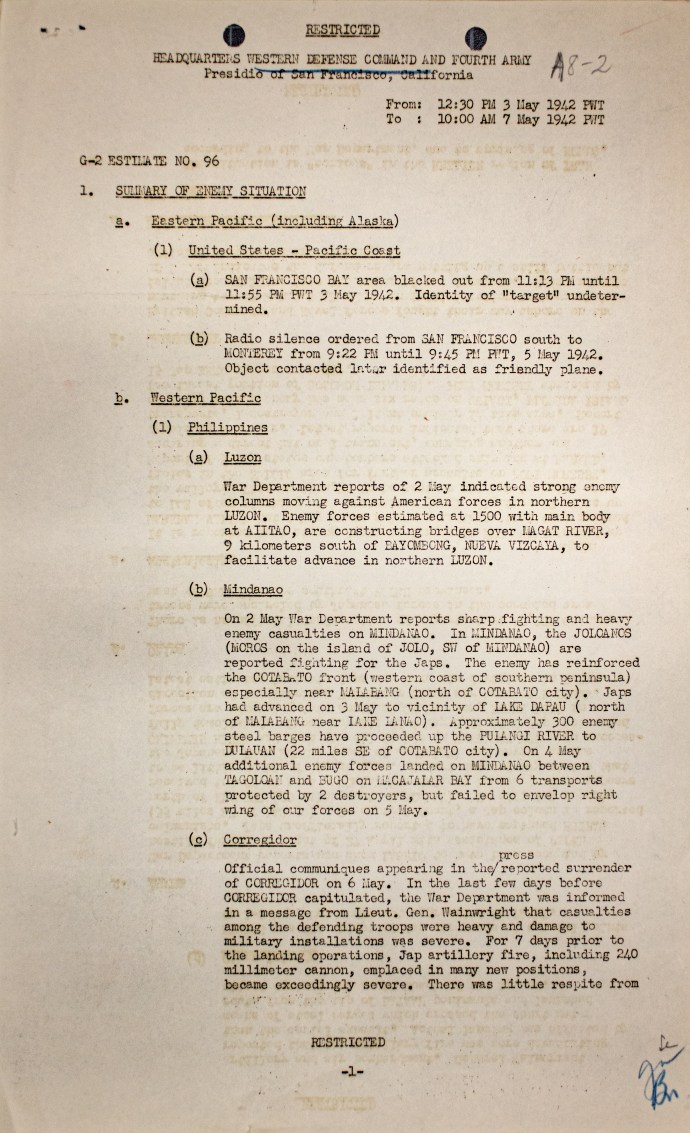
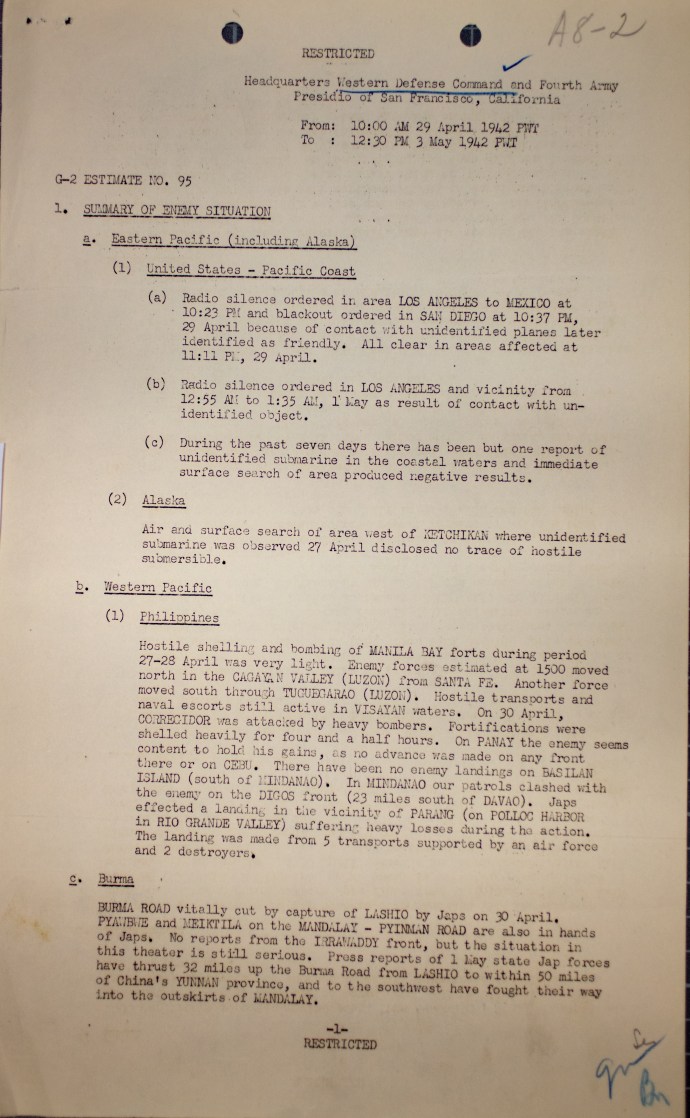 After midnight, those shaken citizens of San Francisco emerged from their basements and bomb shelters. The lights came back on, providing whatever sense of normalcy remained in a world where seemingly at any moment, their lives could be torn apart by bombs and fire. As heads hit pillows, thoughts turned away from what lay over the horizon. To focus on that meant a night bereft of sleep since the future seemed bleak indeed.
After midnight, those shaken citizens of San Francisco emerged from their basements and bomb shelters. The lights came back on, providing whatever sense of normalcy remained in a world where seemingly at any moment, their lives could be torn apart by bombs and fire. As heads hit pillows, thoughts turned away from what lay over the horizon. To focus on that meant a night bereft of sleep since the future seemed bleak indeed.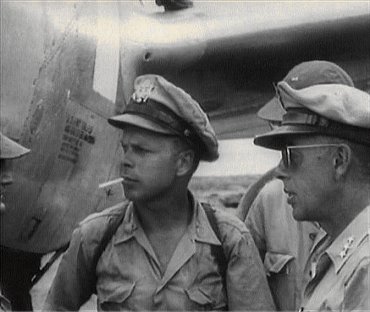 The night of the air raid alert, they drove into Fresno from Anaheim. They grabbed a late dinner and returned to their hotel shortly before the contact first flared on B3’s radar oscilloscope. Though exhausted from the travel, the two young men took turns writing letters home to their parents on the single desk between their hotel room’s beds. They were either still writing, or just ready to turn in for the night when the radio stations left the air and the lights went out all over Northern California.
The night of the air raid alert, they drove into Fresno from Anaheim. They grabbed a late dinner and returned to their hotel shortly before the contact first flared on B3’s radar oscilloscope. Though exhausted from the travel, the two young men took turns writing letters home to their parents on the single desk between their hotel room’s beds. They were either still writing, or just ready to turn in for the night when the radio stations left the air and the lights went out all over Northern California.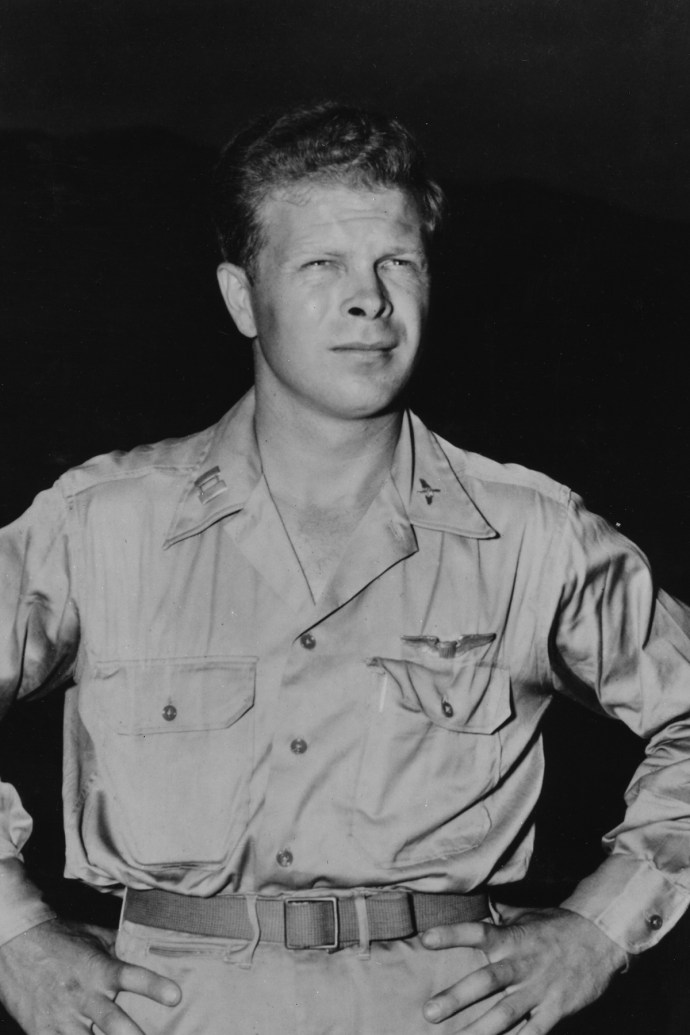
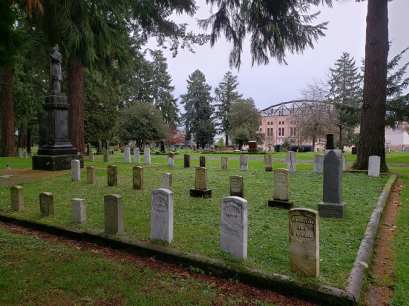


![Race of Aces_Sara Vladic quote[1]](https://theamericanwarrior.com/wp-content/uploads/2020/01/race-of-aces_sara-vladic-quote1.png?w=354&h=354)


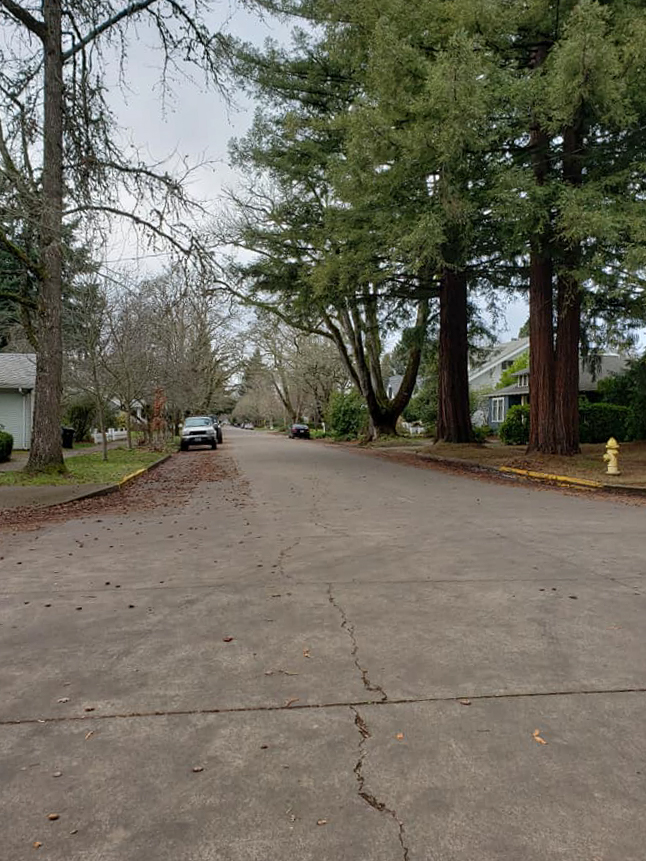
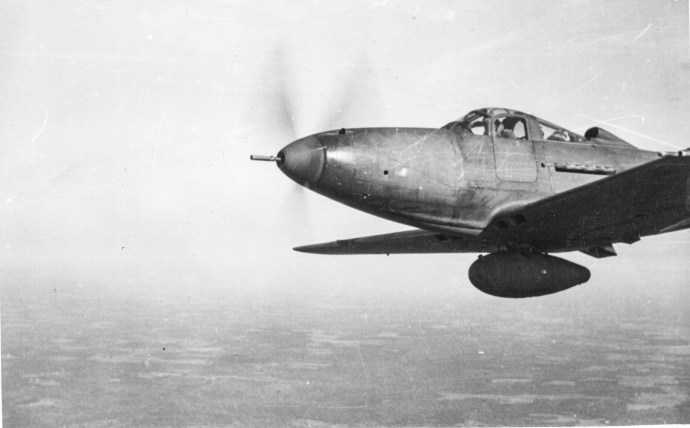





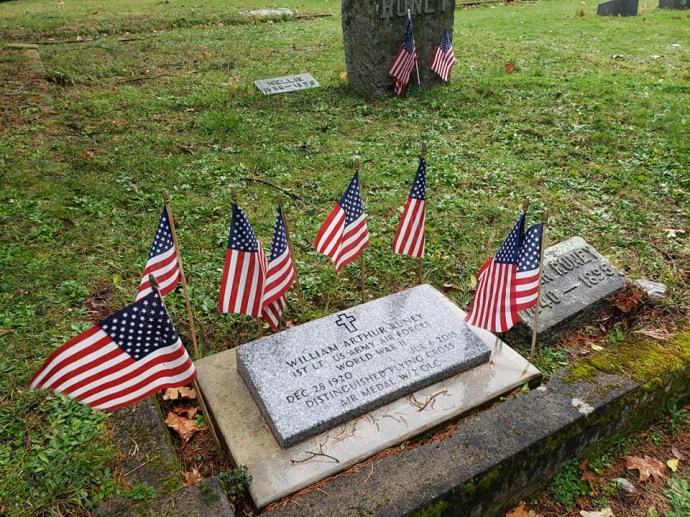
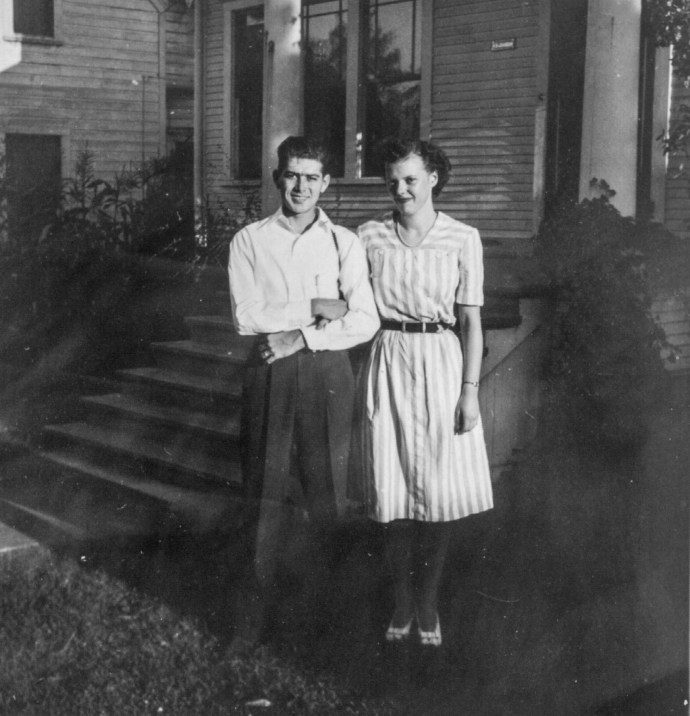
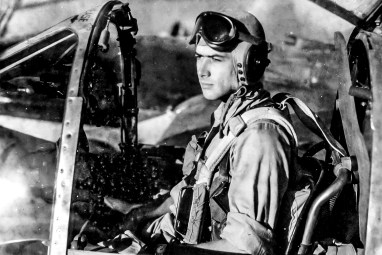
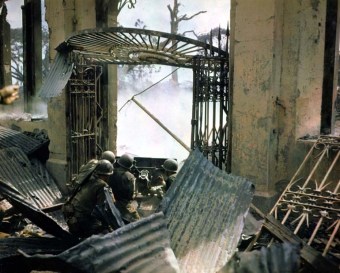


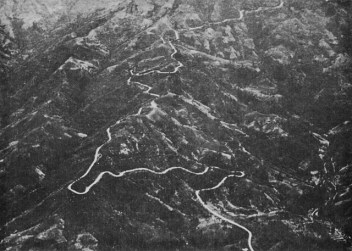


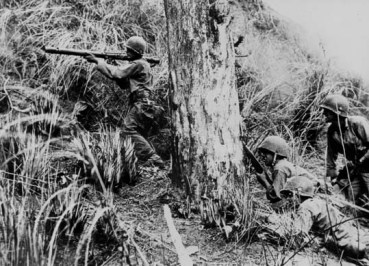






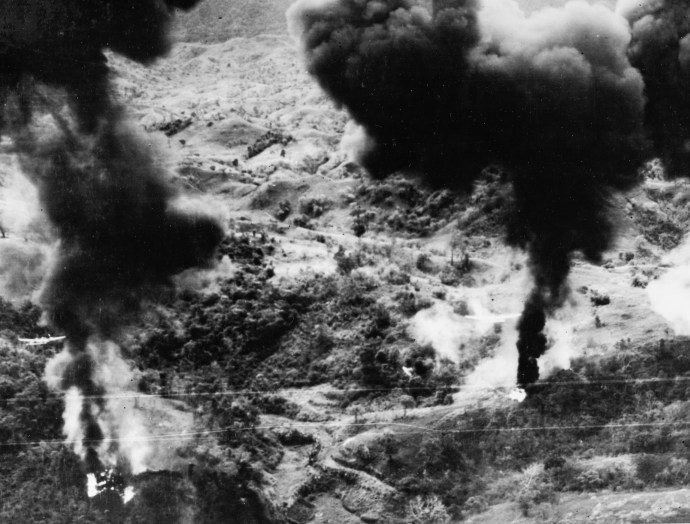







 This was sent by the commanding general of I Corps, which carried out the assault on the Ipo Dam. General Swift apparently witnessed the subsequent mass napalm strike on the Eighth Army’s Front at the Balete Pass a week after the dam was captured.
This was sent by the commanding general of I Corps, which carried out the assault on the Ipo Dam. General Swift apparently witnessed the subsequent mass napalm strike on the Eighth Army’s Front at the Balete Pass a week after the dam was captured.

 June 21, 1918, Private Thomas Bennett, a Marine rifleman from tiny Dallas, Oregon, filed into the front lines with his brothers of 3rd Battalion, 5th Marines. For almost a month, the American 2nd Division had fought a brutal, close-range battle against the German Army on the north bank of the Marne River. The fresh American troops had blunted a major German offensive, kept the enemy from getting a foothold across the Marne, and played a significant role in saving Paris from coming under attack.
June 21, 1918, Private Thomas Bennett, a Marine rifleman from tiny Dallas, Oregon, filed into the front lines with his brothers of 3rd Battalion, 5th Marines. For almost a month, the American 2nd Division had fought a brutal, close-range battle against the German Army on the north bank of the Marne River. The fresh American troops had blunted a major German offensive, kept the enemy from getting a foothold across the Marne, and played a significant role in saving Paris from coming under attack.






 Ian Tawney was one of those young men who graduated from Dallas High into that uncertain future in 2003. In a lot of ways, Ian was a typical small town American kid. In school, he was known as a friend to everyone, one of those students who bridged cliques and was widely admired. He was a hunter, an outdoorsman who loved to snowboard in the Cascades during winters and developed a passion for motorcycles. He was also a cat and dog lover, having two of the former and one of the latter.
Ian Tawney was one of those young men who graduated from Dallas High into that uncertain future in 2003. In a lot of ways, Ian was a typical small town American kid. In school, he was known as a friend to everyone, one of those students who bridged cliques and was widely admired. He was a hunter, an outdoorsman who loved to snowboard in the Cascades during winters and developed a passion for motorcycles. He was also a cat and dog lover, having two of the former and one of the latter.


 Meanwhile, to the south, at FOB Bastion/Leatherneck, the Marines based there went out on patrols and convoy duty to support the operations around the Helmand River Valley. Leading the way for these Marine columns was a tiny company of Oregon National Guard engineers….from Dallas. The 162 Engineers had spent the year driving Mad-Max-esque armored vehicles around Helmand looking to either detonate or destroy roadside bombs and mines. By October, when they were getting ready to return home, they were down to about eighty engineers. Those who remained were hardened, battle tested veterans. One had his vehicle blown up by IED’s five times. Another stepped on a pressure plate home made mine, but the device malfunctioned and failed to explode.
Meanwhile, to the south, at FOB Bastion/Leatherneck, the Marines based there went out on patrols and convoy duty to support the operations around the Helmand River Valley. Leading the way for these Marine columns was a tiny company of Oregon National Guard engineers….from Dallas. The 162 Engineers had spent the year driving Mad-Max-esque armored vehicles around Helmand looking to either detonate or destroy roadside bombs and mines. By October, when they were getting ready to return home, they were down to about eighty engineers. Those who remained were hardened, battle tested veterans. One had his vehicle blown up by IED’s five times. Another stepped on a pressure plate home made mine, but the device malfunctioned and failed to explode.

 The next day, Ian was leading his squad on a patrol and was killed by yet another IED. For everyone back home who loved Ian, October 16, 2010 became a dividing line in their lives. Once the contact teams with their chaplains knocked on their doors, the family was changed forever by the grief.
The next day, Ian was leading his squad on a patrol and was killed by yet another IED. For everyone back home who loved Ian, October 16, 2010 became a dividing line in their lives. Once the contact teams with their chaplains knocked on their doors, the family was changed forever by the grief.

















 The Sunday after the ceremony, I returned to the little cemetery in King’s Valley in the car we’d used to escort Taylor up to Willamette National where he was laid to rest. I got out and wandered in search of Ian’s own resting place. As I did, I passed Private Bennett’s headstone. Worn and weathered by a hundred years of Oregon rain, it stands watch like a lonely sentinel over a long-forgotten Marine from a war long out of the public mind. I paused to take a photograph, then realized I was being watched.
The Sunday after the ceremony, I returned to the little cemetery in King’s Valley in the car we’d used to escort Taylor up to Willamette National where he was laid to rest. I got out and wandered in search of Ian’s own resting place. As I did, I passed Private Bennett’s headstone. Worn and weathered by a hundred years of Oregon rain, it stands watch like a lonely sentinel over a long-forgotten Marine from a war long out of the public mind. I paused to take a photograph, then realized I was being watched.


 On June 25, 2019, David Bellavia received the Medal of Honor for actions in Fallujah in November 2004. David is the sole living recipient of the MOH from the Iraq War, the others were awarded posthumously.
On June 25, 2019, David Bellavia received the Medal of Honor for actions in Fallujah in November 2004. David is the sole living recipient of the MOH from the Iraq War, the others were awarded posthumously.
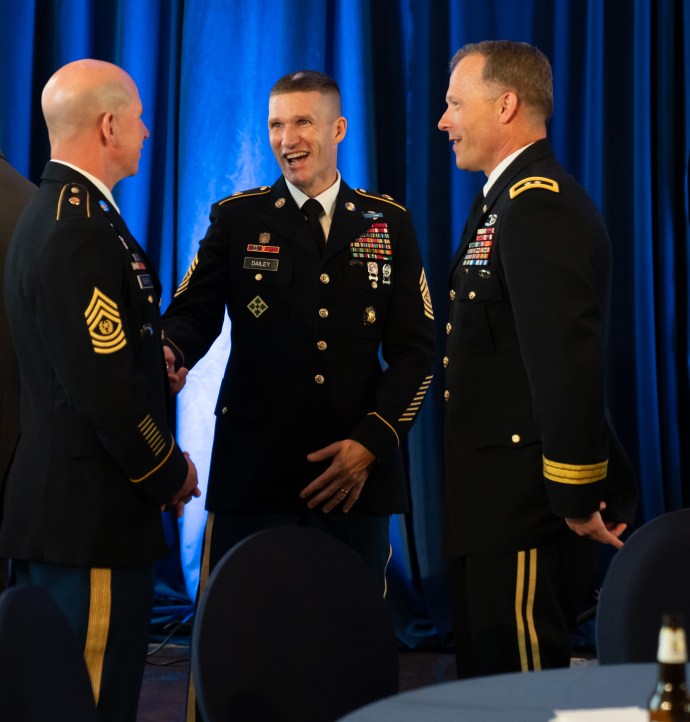





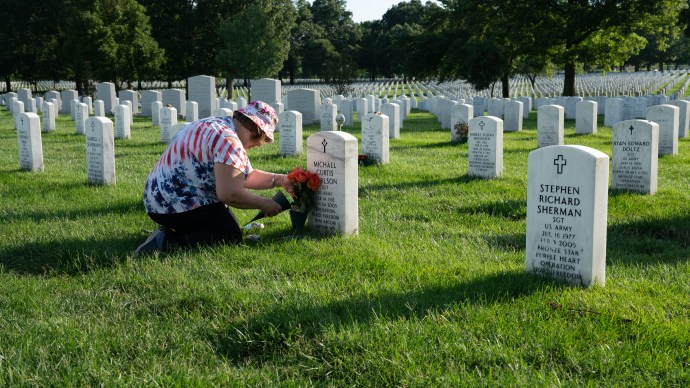

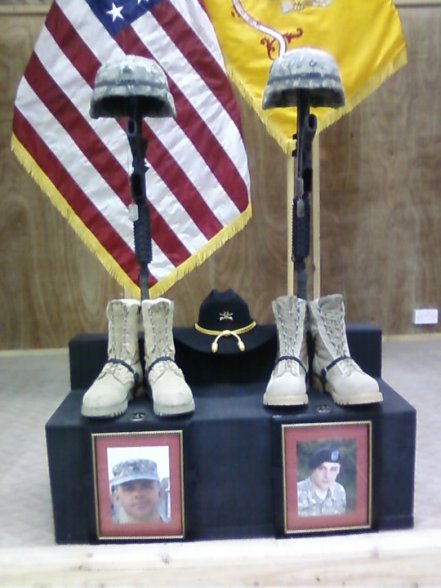

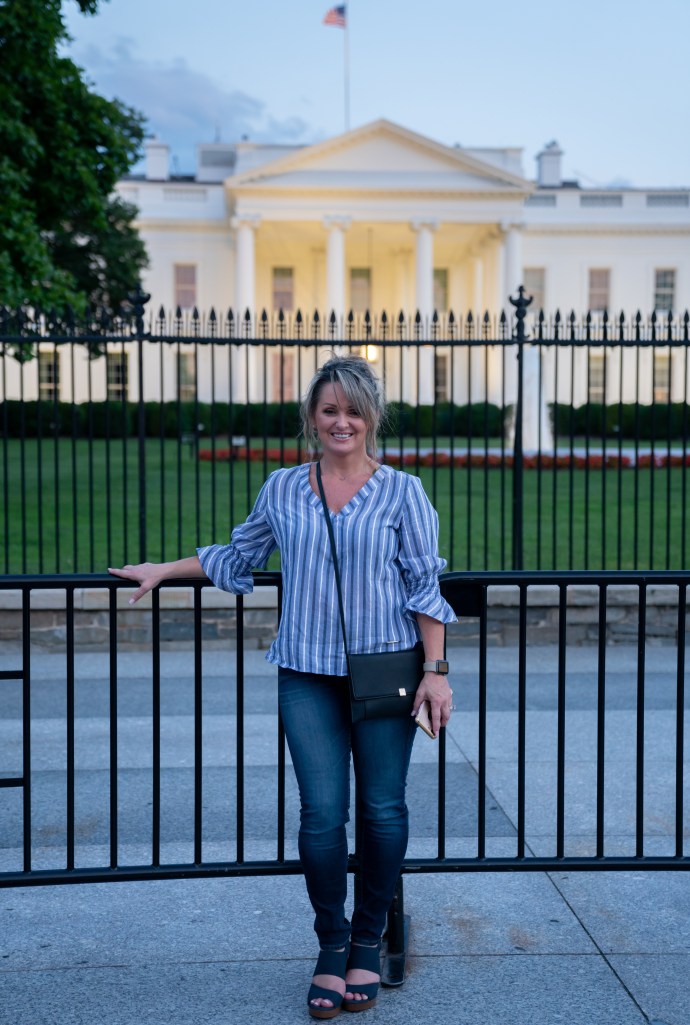 I’d gone to D.C. to finally meet an old friend face-to-face and see the President award him the Medal of Honor. To my astonishment, at the end of the trip I came home warmed by the knowledge that I’d just met two more friends who surely will be in my life for years to come.
I’d gone to D.C. to finally meet an old friend face-to-face and see the President award him the Medal of Honor. To my astonishment, at the end of the trip I came home warmed by the knowledge that I’d just met two more friends who surely will be in my life for years to come.

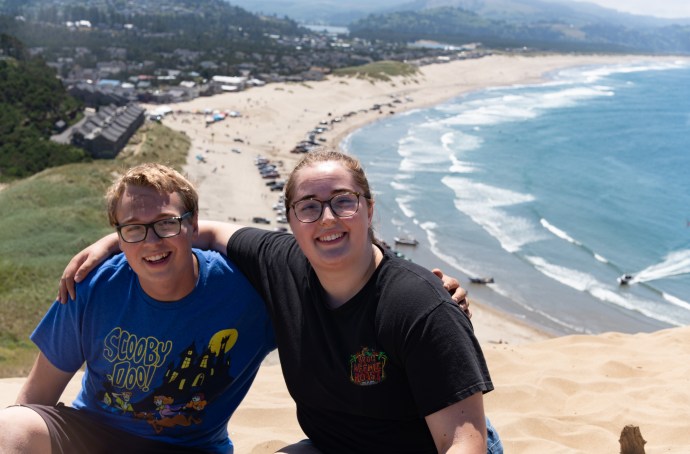

 In the spring of 2006, literary agent, author and historian Jim Hornfischer introduced me to David Bellavia. David had recently left the Army and was settling into civilian life–sort of. Two months after we started talking every day on the phone, he returned to Iraq as an embedded reporter, traveling all over Anbar Province before coming home to work on a book together with me.
In the spring of 2006, literary agent, author and historian Jim Hornfischer introduced me to David Bellavia. David had recently left the Army and was settling into civilian life–sort of. Two months after we started talking every day on the phone, he returned to Iraq as an embedded reporter, traveling all over Anbar Province before coming home to work on a book together with me.


 Memorial Day Notes:
Memorial Day Notes:
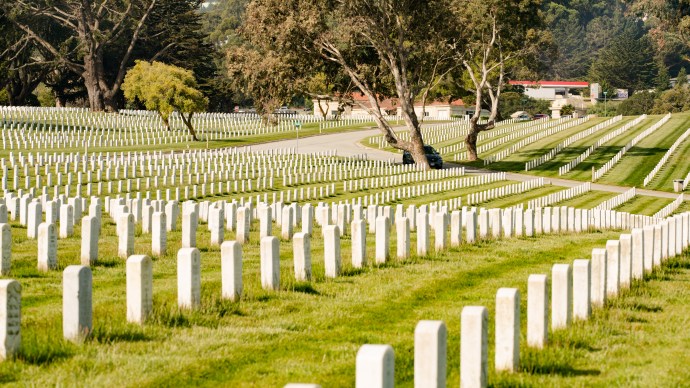
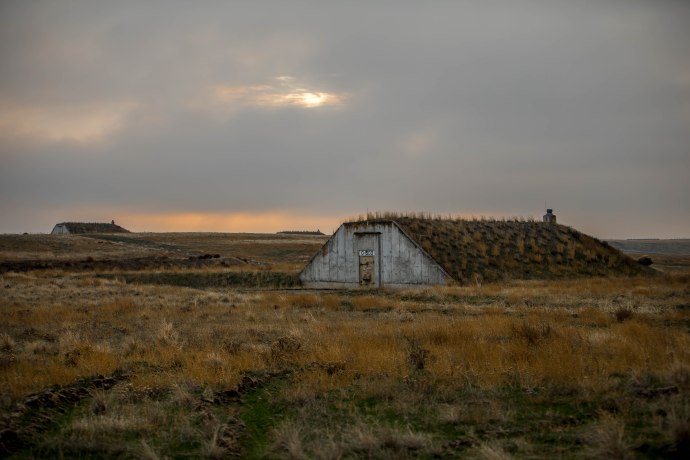 Out in the Eastern Oregon desert, the U.S. Army built a massive facility in 1941 as part of its pre-war expansion program. Called the Umatilla Army Depot, this bleak spot in the middle of the desert, not far from the Columbia River served as a storage facility for ammunition and basic supplies for units in the Pacific. During the war, Umatilla housed a 30 days supply of ammunition for all the U.S. Army divisions deployed against the Japanese.
Out in the Eastern Oregon desert, the U.S. Army built a massive facility in 1941 as part of its pre-war expansion program. Called the Umatilla Army Depot, this bleak spot in the middle of the desert, not far from the Columbia River served as a storage facility for ammunition and basic supplies for units in the Pacific. During the war, Umatilla housed a 30 days supply of ammunition for all the U.S. Army divisions deployed against the Japanese. During the Cold War, the Army chose Umatilla as a storage site for about twelve percent of the United States’ stockpile of chemical weapons. Everything from blister agents to VX gas was stored in L Block, which was sort of a base within the base complete with its own security fence and check points. Those weapons were destroyed at a purpose-built incinerator built next to L Block in the 1990s. The work lasted for years, finally finishing up in 2011.
During the Cold War, the Army chose Umatilla as a storage site for about twelve percent of the United States’ stockpile of chemical weapons. Everything from blister agents to VX gas was stored in L Block, which was sort of a base within the base complete with its own security fence and check points. Those weapons were destroyed at a purpose-built incinerator built next to L Block in the 1990s. The work lasted for years, finally finishing up in 2011.
